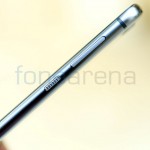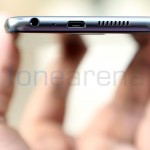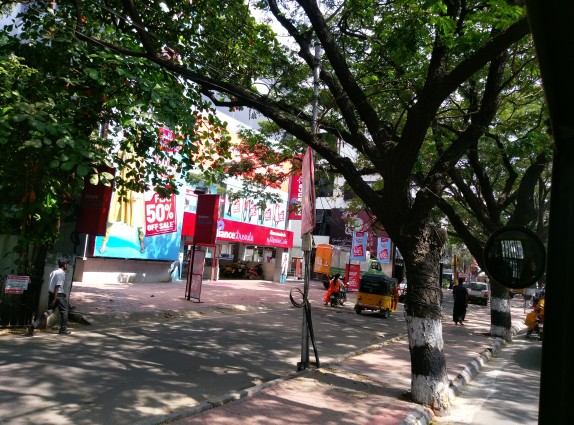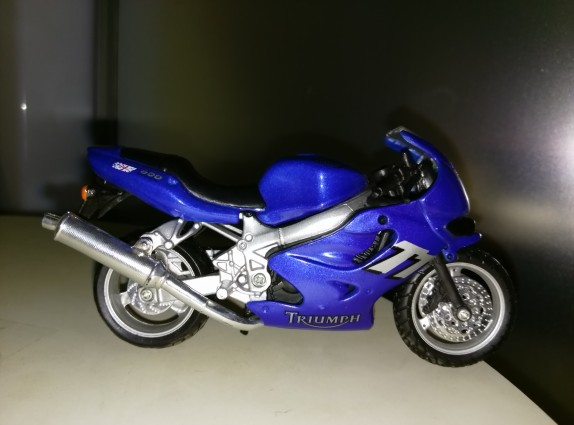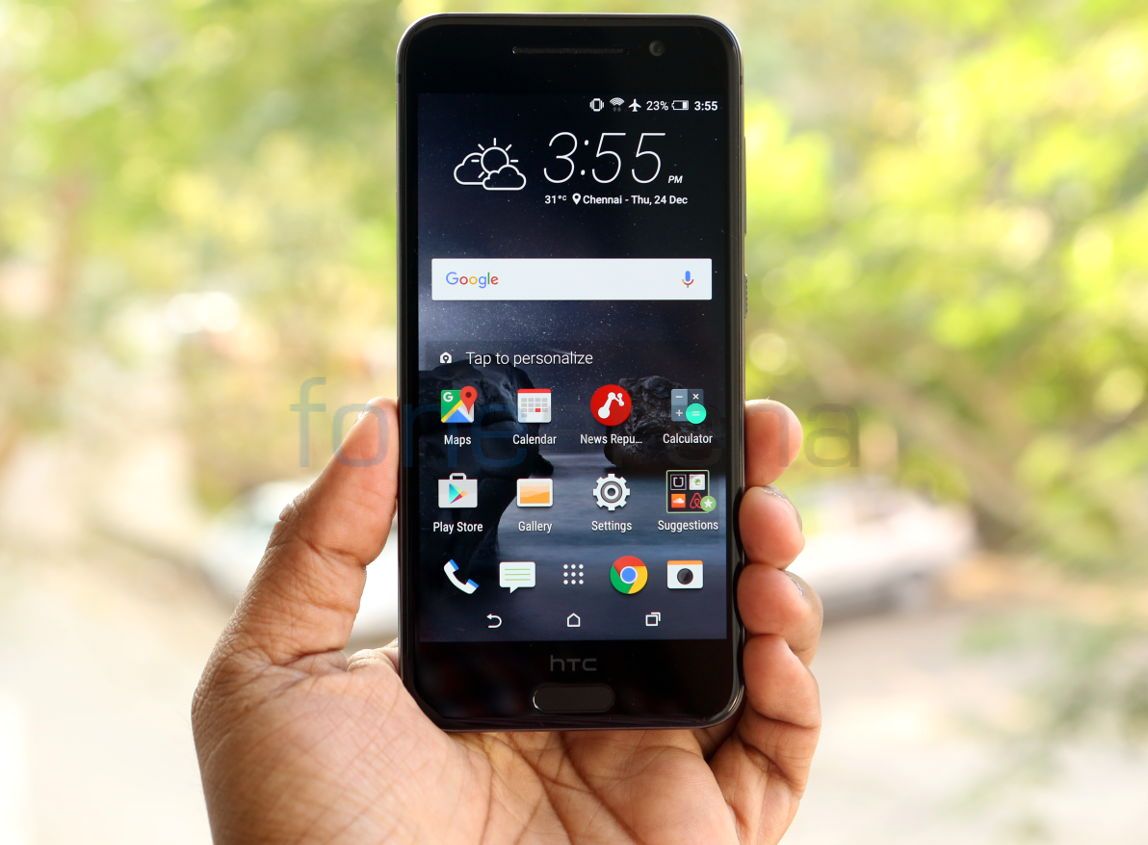
After the high-end ‘One M’ series and mid-range Desire series, HTC introduced One A9, the company’s first ‘A series’ smartphone with a premium build, back in October last year. It was launched in India last month at a price tag of Rs. 29,990. It has a fingerprint sensor, unibody metal design, 13MP camera with RAW image support and more features that were rarely seen on mid-range HTC smartphones. Is the smartphone worth the price? Let us find out in the complete review.
Video Review
httpv://www.youtube.com/watch?v=R83NAuQMtLY
Display, Hardware and Design
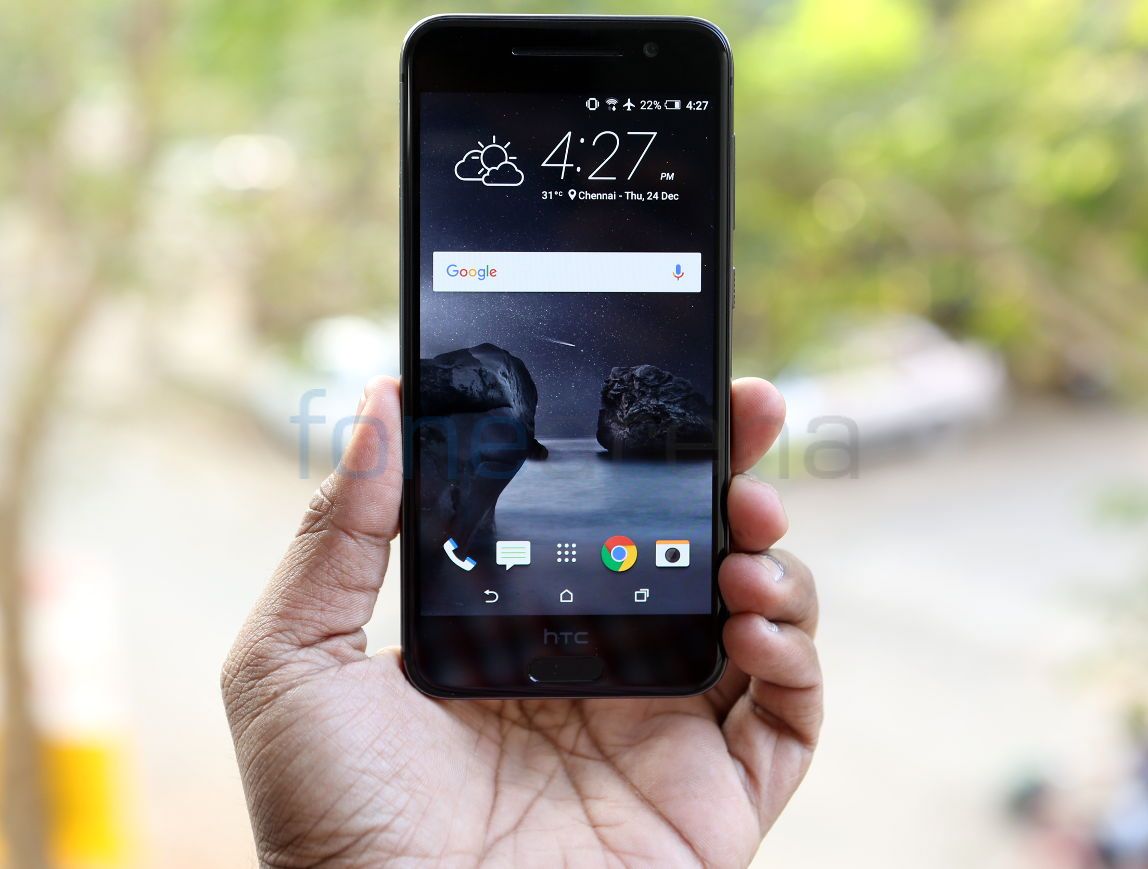
The first thing you notice on the One A9 is the brilliant Full HD AMOLED display with edge-to-edge 2.5D Corning Gorilla Glass, which is smooth to touch. The 5-inch display with a resolution of 1920 x 1080 pixels and a pixel density of about 441 PPI is sharp and bright, offers vivid color output and the sunlight legibility is good as well. Blacks are perfectly black, thanks to the AMOLED panel.
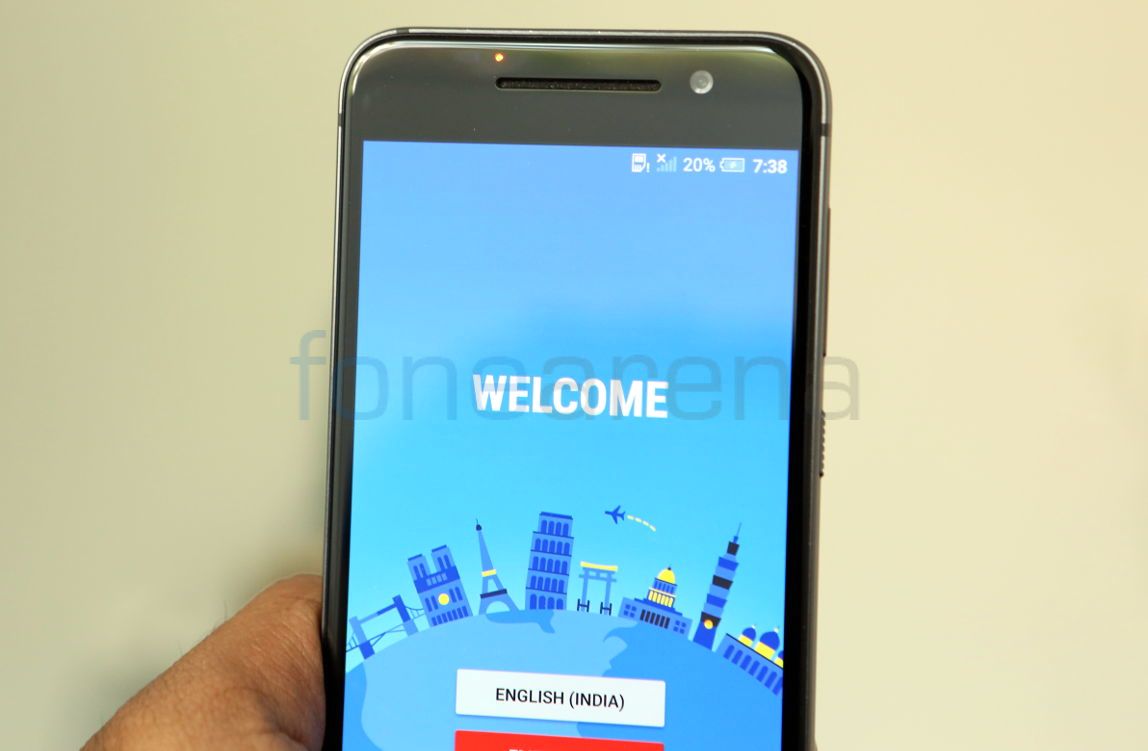
It has an earpiece on the top along with the UltraPixel camera and the usual set of proximity and ambient light sensors. The UltraPixel camera on the front is good for selfies and video chats. It also has a small notification LED above the earpiece.
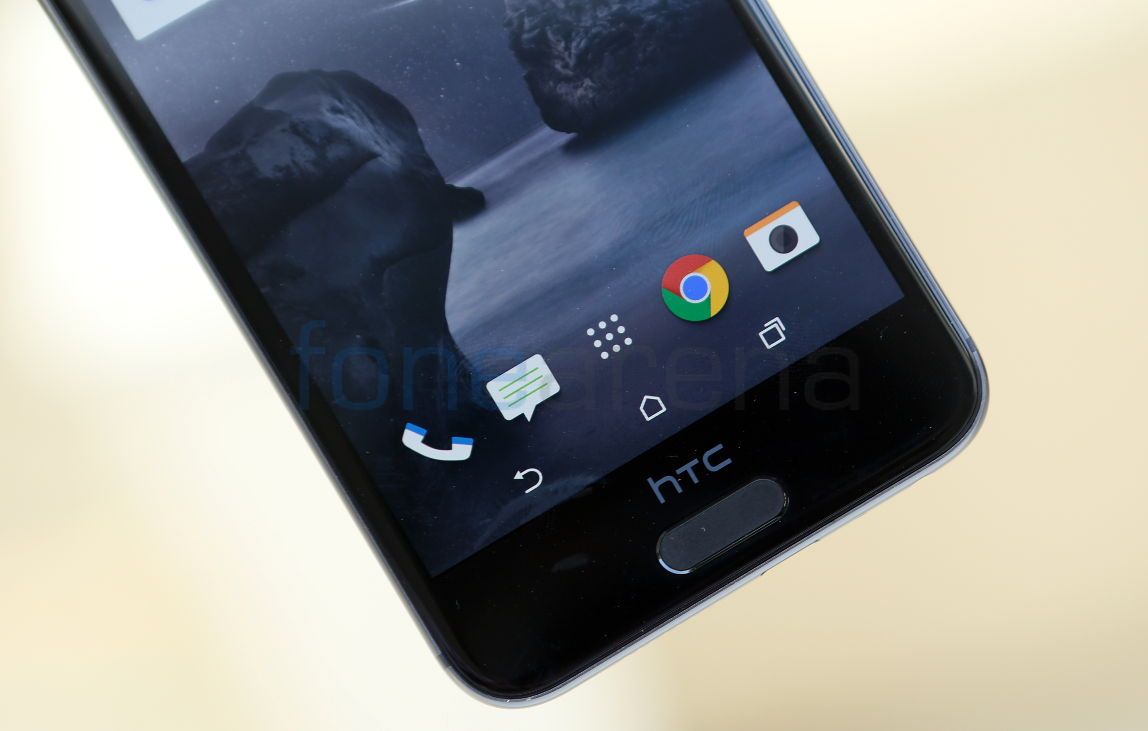
It has fingerprint sensor below the display, which offers haptic feedback when pressed and can also be used as a home button. Even though the smartphone replaces capacitive touch buttons for on-screen buttons, there are huge bezels below the display, mainly due to the fingerprint sensor and there is also a HTC branding above it. At 145.75mm, the phone is taller than most other smartphones with a 5-inch display, but it is 70.8mm wide, making it easy to hold even if you have small hands.
The phone has a metal frame that offers a shiny look. “The phone is bead blasted before the sides are polished,” according to the company. Since the sides are smooth, it is a bit slippery to hold. The phone is just 7.26mm thick. You can see the antenna bands on the sides of the smartphone. The nano SIM slot and the microSD card slot are present on the left side. The power button and the volume rockers are present on the right side. The power button has small ridges that offers a nice feel and is easy to differentiate from the volume rockers.
The 3.5mm audio jack is awkwardly placed on the bottom along with a micro USB slot and a loudspeaker grill. There is also a tiny primary microphone hole. Sadly the phone doesn’t have a USB Type-C slot and also lacks HTC’s signature dual boom sound speakers on the front. Lack of dual front-facing speakers is a good thing in a way since it would have made the phone even taller.
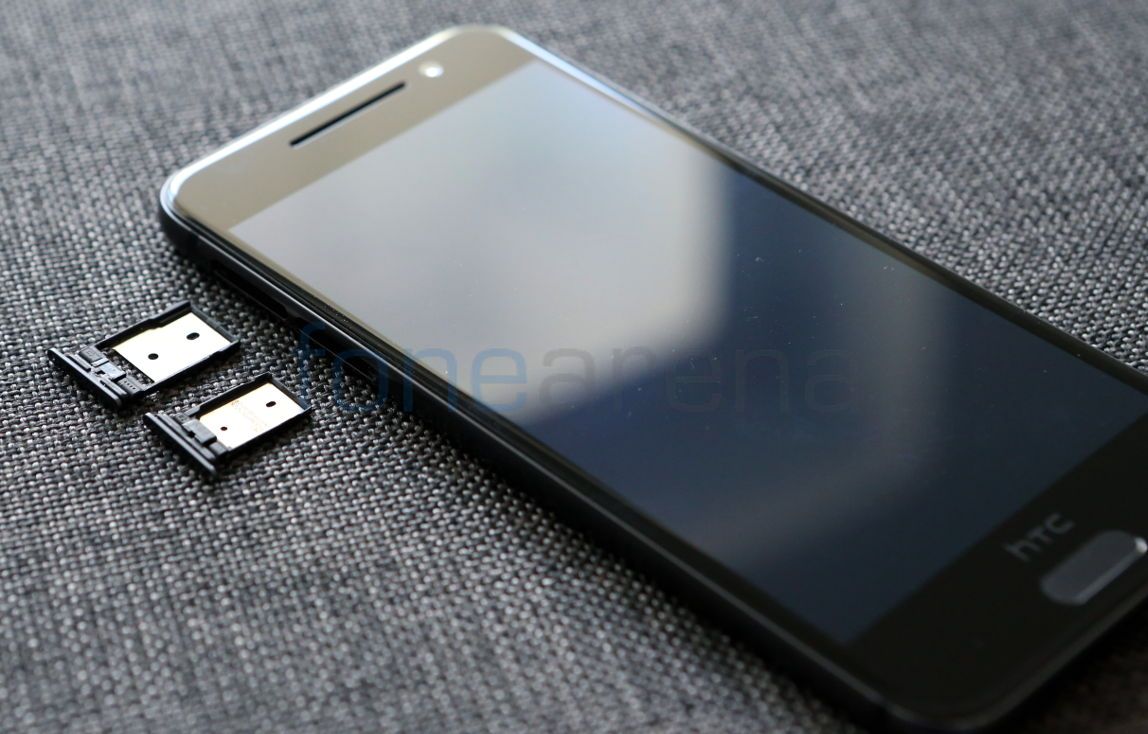
As you can see, there are separate nano SIM and a microSD slot on the left side of the phone that can be removed using the bundled SIM ejector tool. Wish it had dual SIM support since most smartphones like the Moto X Style have dedicated dual SIM slots and a microSD card slot.

The phone has a 13-megapixel camera on the back with optical image stabilization (OIS), f/2.0 aperture, sapphire glass lens and dual-tone LED flash. It also has a secondary microphone on the black band, below the camera module.
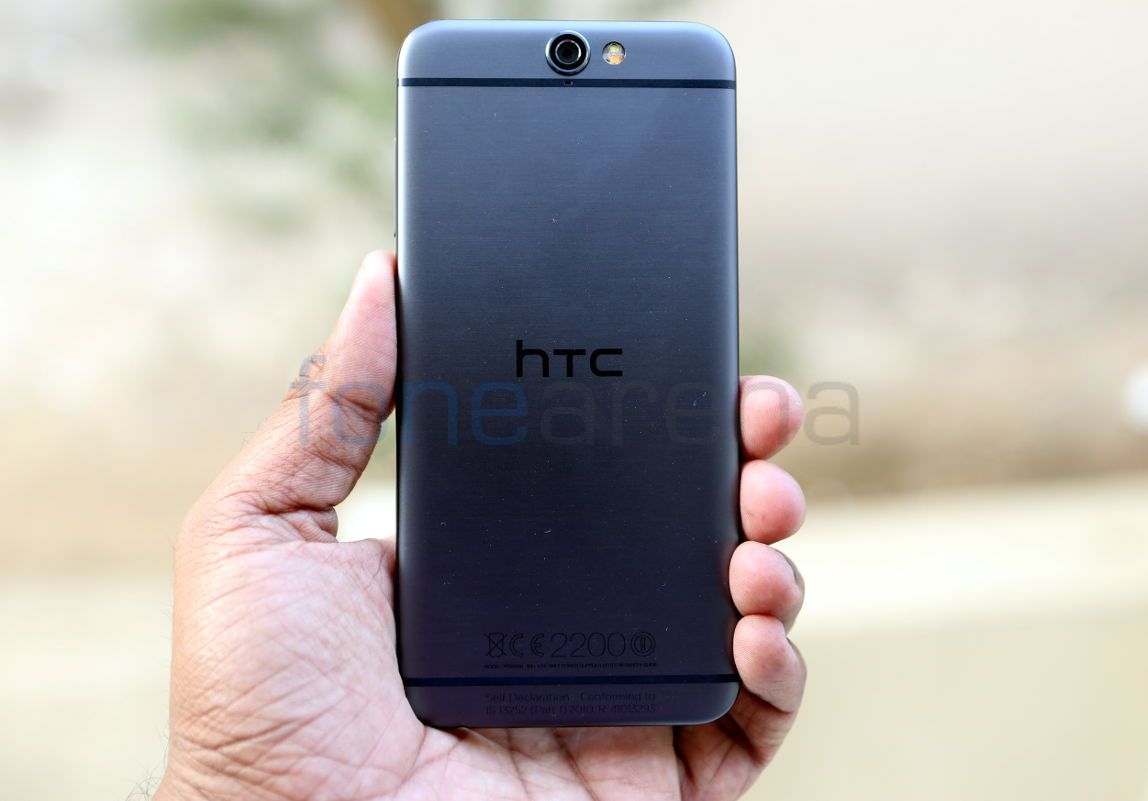
It has brushed aluminium back that offers a premium look and also offers a solid feel when holding. Even though the smartphone might have been inspired by the iPhone 6, the build quality is quite good. It weighs 143 grams, which is decent for a 5-inch phone with a metal body. The HTC One A9 doesn’t disappoint in terms of hardware.
Camera
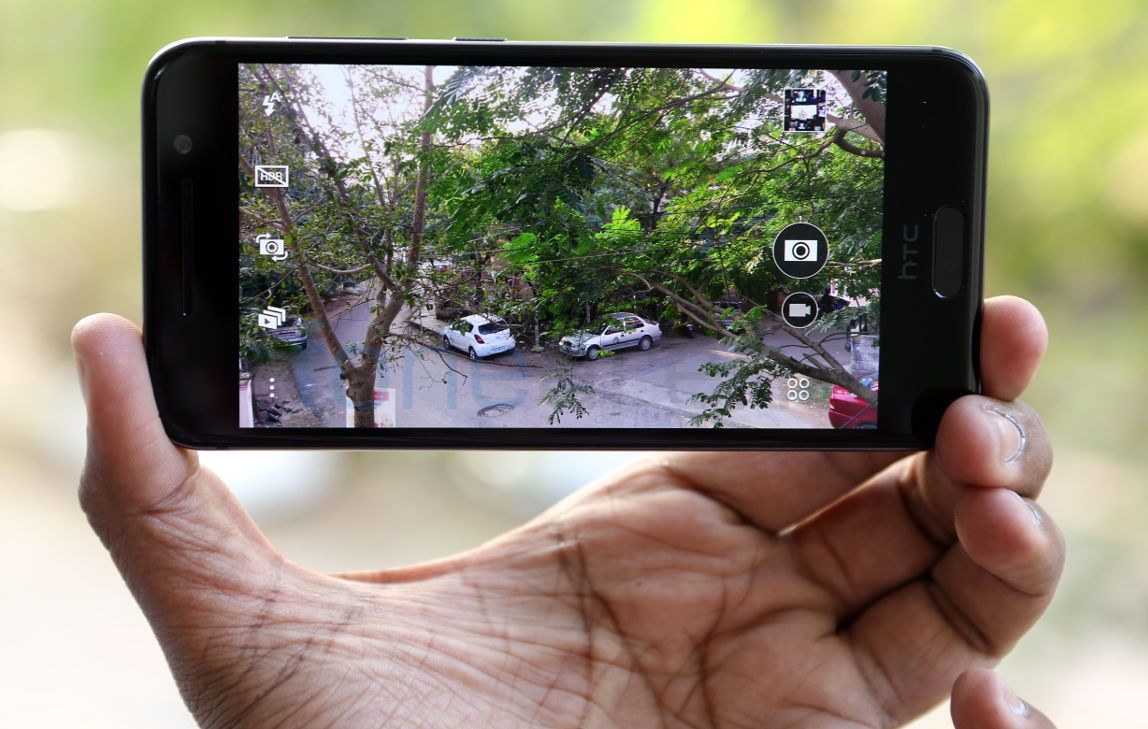
Coming to the camera, the main highlight of the smartphone is the pro mode that lets you adjust White balance (2300K to 7500K), Exposure, ISO (100 to 1600), Shutter Speed (1/8000s to 2s) and focus mode. It also has support to capture images in RAW (.DNG format). You can also use the volume rockers as shutter button or use other camera options such as auto smile capture, voice capture and touch to capture.
Coming to the image quality, images are good in most of the aspects, have excellent details and good color reproduction, but some images seem over saturated and the exposure is not the best. Thanks to phase-detection auto-focus (PDAF), it is quick to capture the images so that you don’t miss a shot. Since it has f/2.0 aperture, macro shots are good. HDR shots were good too, but low-light images don’t have much details, even though it has minimal noise. ISO helps to certain extent in low-light photos even if you don’t hold it steady, but sometimes low-light shots end up blurry. Dual-tone flash lets you maintain natural tones and it is not overpowering, even when capturing close-up shots.
Check out some camera samples below (Click the image to view the full resolution samples.


Sadly it can’t record 4K videos due to processor restriction. It can record videos at 1080p resolution at 30 fps. The video quality is good, thanks to OIS and the audio is crisp since it has a secondary microphone. Check out the video sample below.
httpv://www.youtube.com/watch?v=Eg9Wu4tk5xA
It can also record slow motion videos, which is saved in 1024 x 576 resolution, so it doesn’t have much details. It also has hyperlapse mode that saves videos at 720p resolution and you can speed up the videos up to 12x before saving them. You can also convert slow motion videos to a hyperlapse video. Check out the slow motion video.
httpv://youtu.be/ydzxlb9rIWU
Check out the complete set of HTC One A9 camera samples here.
Software
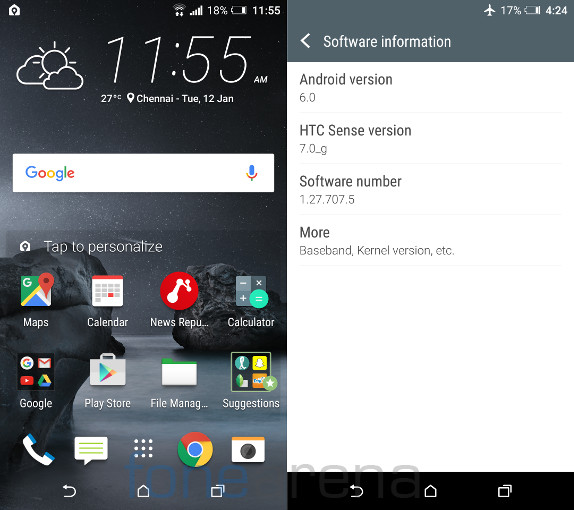
After Nexus devices, HTC One A9 was the first smartphone to run Android 6.0 (Marshmallow) out of the box. It has HTC Sense 7.0 UI on top. The homescreen has a suggestions folder that recommends apps based on your current apps. It also has HTC’s own BlinkFeed screen that shows you favorite topics, news, social media, and more in one place. It can be removed easily if you don’t need it.
Android Marshmallow brings several new features such as Now on Tap, Advanced controls to turn permissions on or off for all your installed apps, Do Not Disturb mode and support for more languages including Gujarati and Urdu. At the announcement HTC said that the unlocked version will get new Android updates within 15 days once Google pushes out the update for the Nexus devices. It rolled out the Android 6.0.1 update for the unlocked One A9 at then end of December, few weeks Google started rolling out the update for Nexus devices. Since our review unit is not the unlocked retail version, it is still on Android 6.0.

You can launch apps directly from the lockscreen shortcuts by dragging them to the top. The quick settings menu gets new ‘Do not disturb’ mode and also has HTC’s Extreme saver option.
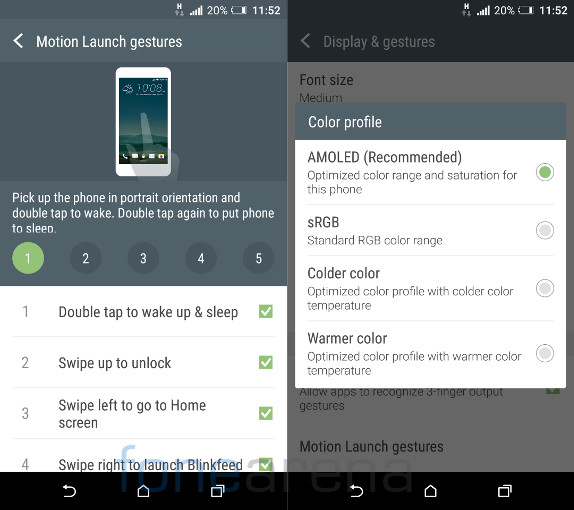
It has several motion gestures such as double tap the screen to wake up & sleep, swipe the screen to unlock, swipe the screen left to go to home screen, swipe right to launch Blinkfeed and use the volume rocker after switching the phone to landscape orientation, to launch the camera quickly when the screen is locked. Display settings also has option to choose your color profile. Default profile is AMOLED that offers optimized colors suitable for the phone’s screen, but you can choose sRGB, Colder color and Warmer color based on your preference.
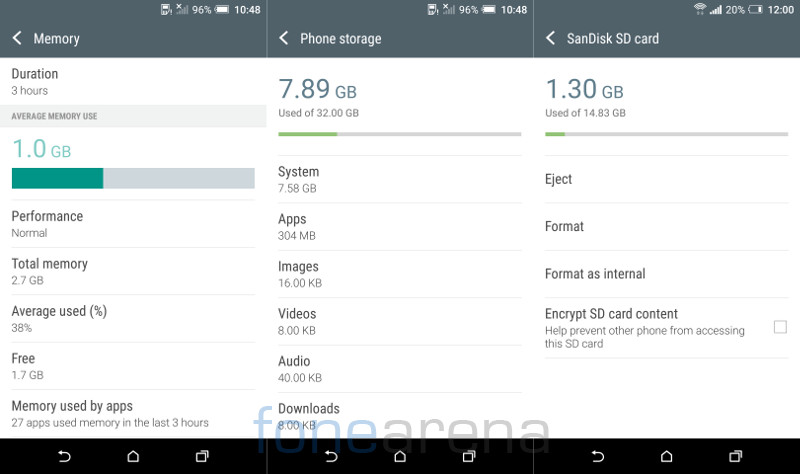
Out of 3GB of RAM, you get 2.7GB of usable RAM, out of which about 1.7GBof RAM is free when the default apps are running in the background. Out of 32GB of internal storage, about 24.3GB of storage is usable. You cannot move the apps to the SD card, but Marshmallow has option to use the microSD as the internal storage. Faster the card you use, the performance will be better.
Fingerprint Sensor

The phone has a fingerprint sensor built into the home button. Placement of the sensor below the display is not as comfortable as the sensor placement on the back of new Nexus phones. Fingerprint sensor on the back of the phone will be easier to access since it is the place where your finger rest when you are holding the phone. But this is quick to unlock the phone as soon as you place your finger on the sensor and offers haptic feedback as well. It doesn’t recognize your finger properly if it’s wet. It also has option to wake up screen or use it as a home button. You can add up to 5 fingerprints.
Apps
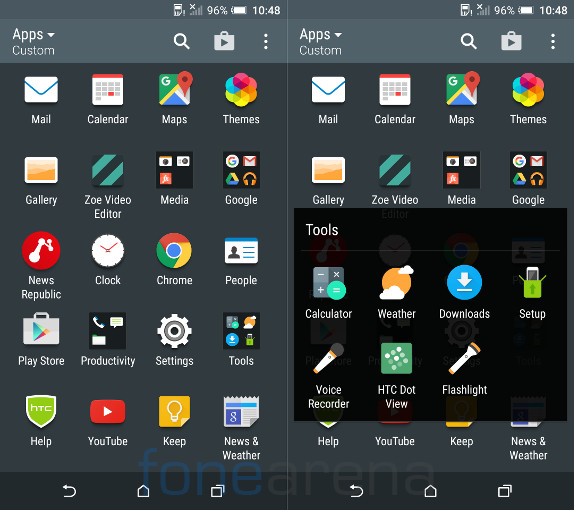
Apart from the usual set of utility apps and Google Apps, the smartphone comes with News Republic, HTC’s own Zoe Video Editor and HTC Dot View app that is a companion app for the Dot View case. It also has a Theme Store to download themes.
Music Player and FM Radio
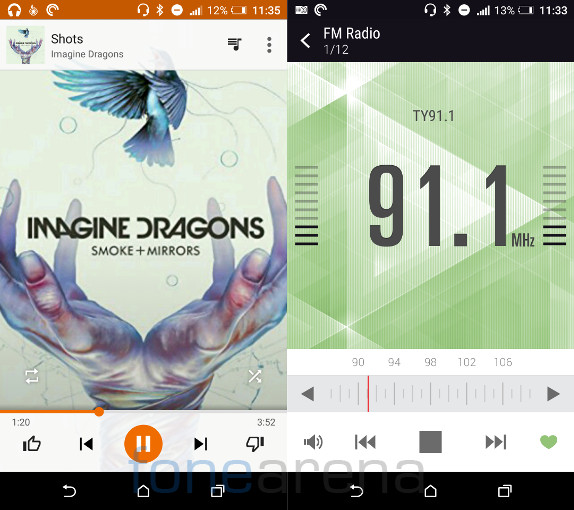
It doesn’t have a dedicated music player, so you have to rely on Google Play Music. Even though it doesn’t have BoomSound speakers, it has BoomSound Audio enhancement that lets you choose different set of earbuds such as HTC earbuds, HTC in-ear or HTC Pro Studio. If you are using third-party earphones, you can choose ‘others’ option. Audio through earphones is brilliant, thanks to the built-in DAC that offers 192kHz / 24bit audio. Loudspeaker output is good as well, even though the phone lacks stereo speakers. Since the loudspeaker is present on the bottom, audio doesn’t get muffled when you are placing the phone on a flat surface. It has FM Radio, which has a new and simple look. It has auto scanning and option to add your favorite stations, but lacks recording. It can play 1080p full HD videos in several formats smoothly.
Connectivity
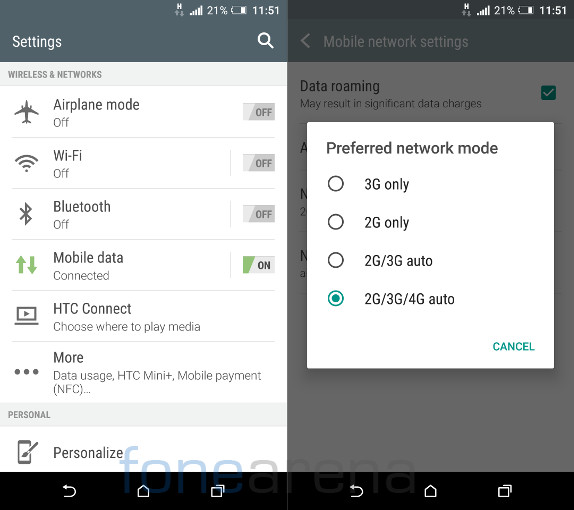
It has the connectivity features such as WiFi 802.11 a/b/g/n/ac (2.4 & 5 GHz), Bluetooth 4.1 and GPS + GLONASS. It also has NFC support. It has 4G connectivity with support for TD-LTE 2300MHz (Band 40) and FDD-LTE 1800MHz (Band 3) for India. Other LTE bands include, FDD bands 1,5,7,8,20 and 28; TDD bands 38 and 41. It doesn’t have Dual SIM support that is common in most of the mid-range smartphones. It has USB on-the-go (OTG) support so that you can connect OTG drives easily.
Performance and Benchmarks
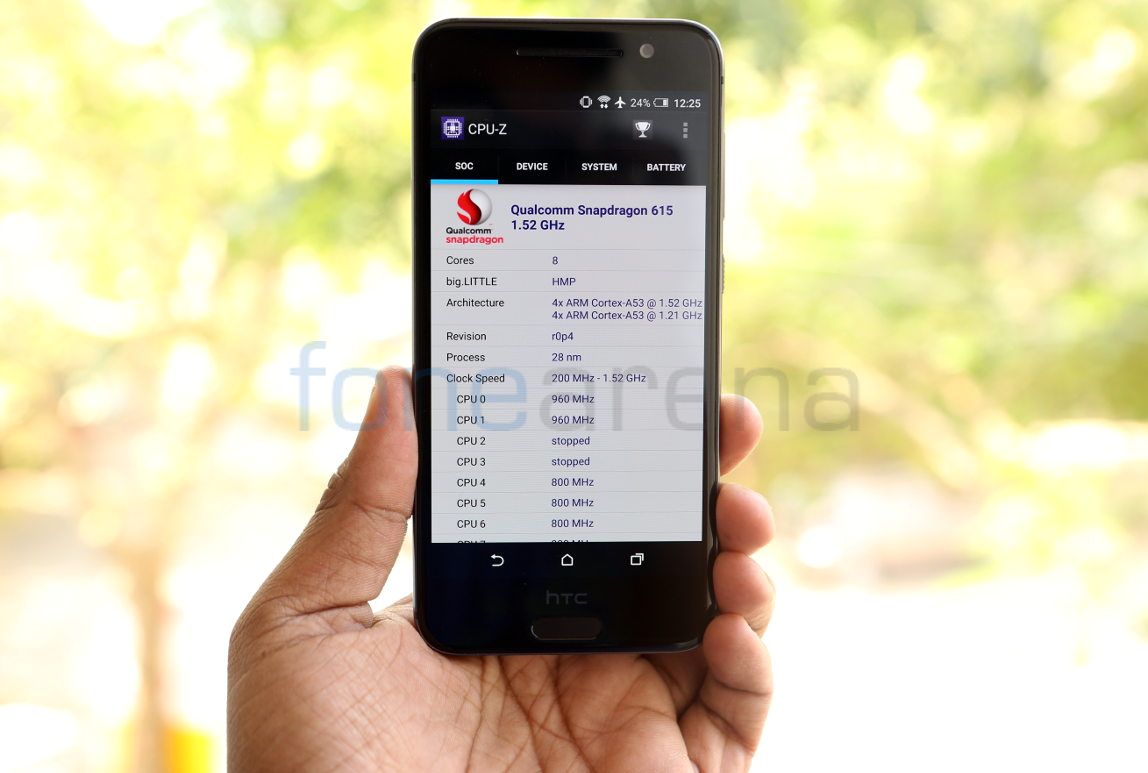
Coming to the performance, the smartphone is powered by an Octa-Core Qualcomm Snapdragon 617 64-bit processor that has four ARM Cortex A53 cores clocked at 1.52 GHz per core and other four Cortex A53 cores clocked at 1.21 GHz per core, faster than the Snapdragon 615. Even though it is Snapdragon 617, CPU-Z shows it as Snapdragon 615. The performance is smooth without any lags. Since it has a metal body it gets a bit warm and the temperature goes up to 39 degrees during 4G usage and intensive gaming, but it doesn’t get too hot to handle. Check out some synthetic benchmark scores below.
AnTuTu Benchmark 5
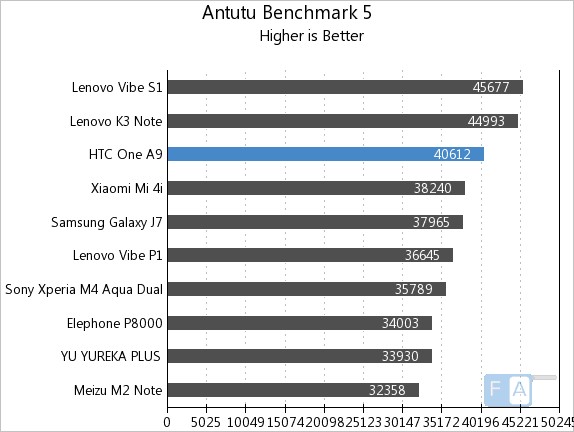
It scored 40612 points in the AnTuTu Benchmark 5 and grabs the third spot, behind the K3 Note.
Vellamo 3.1 MultiCore
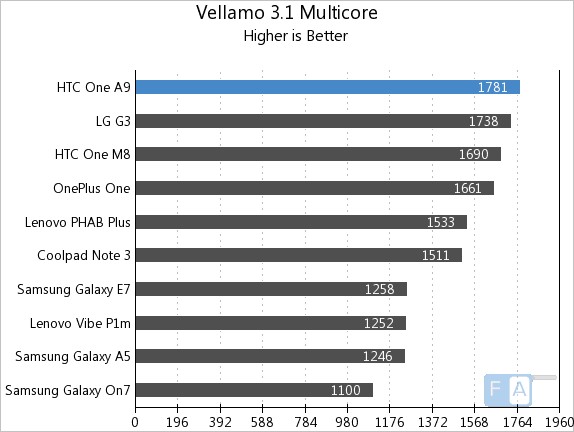
It scored 1781points in the Vellamo 3.1 Multicore benchmark.
3DMark Ice Storm Unlimited
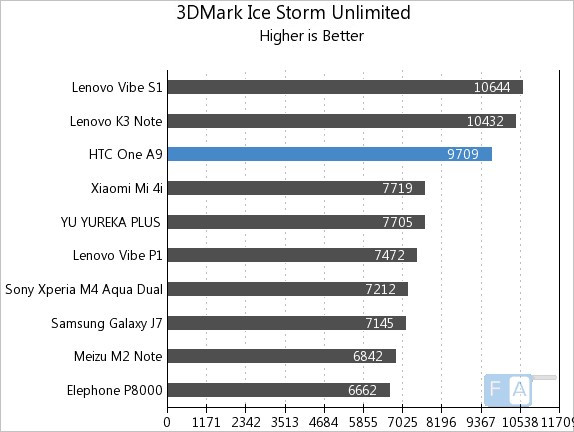
It scored 9709 points in the3DMark Ice Storm Unlimited GPU benchmark.
Basemark OS II
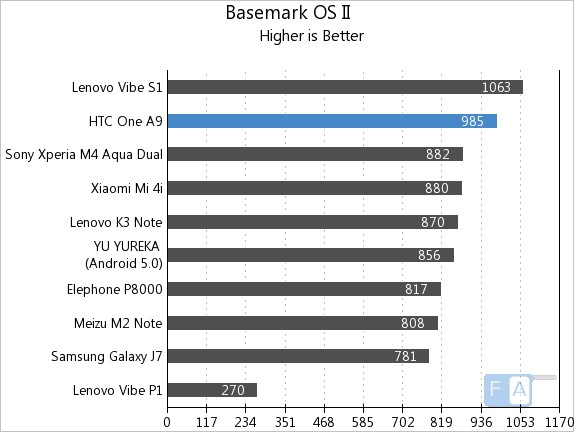
It scored 985 points in the Basemark OS II benchmark and grabs the second spot. Check out the complete set of HTC One A9 Benchmarks here.
It has 500 MHz Adreno 405 GPU. We tried several games, most some were smooth and graphics were good too. It scored 4/5 points in our gaming review. Check out the gaming review video to know more about the gaming performance in detail.
httpv://www.youtube.com/watch?v=mzviK76EqIg
Battery life
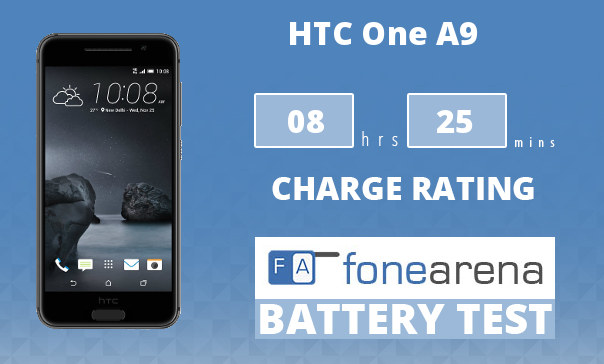
Coming to battery life, the 2150mAh battery lasts for less than a day even with average use such as 4G for couple of hours, some image captures, couple of hours of music playback and some gaming. With minimal use, it lasts for a day. The power saving mode and extreme power saving mode lets you extend the battery life when the battery is low.
In our battery test the smartphone achieved a One Charge Rating of 8 hours and 25 minutes, mainly due to brilliant talk time. This is good for the battery capacity that it offers, but HTC should have opted for the larger battery since this is not removable. Check out the complete set of HTC One A9 battery life test results here.
Conclusion
At a price tag of Rs.29,990, the One A9 is definitely a bit costly compared to other smartphones in the range for the features it offers. The AMOLED display is brilliant, the phone has a solid build and also has a microSD expansion slot, but the battery life is not impressive. Even though the camera is good and has RAW support, the processor limits it from recording 4K videos. HTC could have gone with Snapdragon 808 processor to compete with the Moto X Style that also offers dual SIM support at the same price. If these things are rectified in the next ‘One A series’ smartphone, HTC will be a winner in the segment. To summarize, here are the pros and cons of the smartphone.
Pros
- Brilliant display
- Solid build quality
- Runs on the latest Android 6.0 (Marshmallow) out of the box
- Good camera with RAW mode
- MicroSD expansion slot
Cons
- Battery life could be better
- Lacks 4K video recording
- Slightly priced on the higher side
- No Dual SIM support


